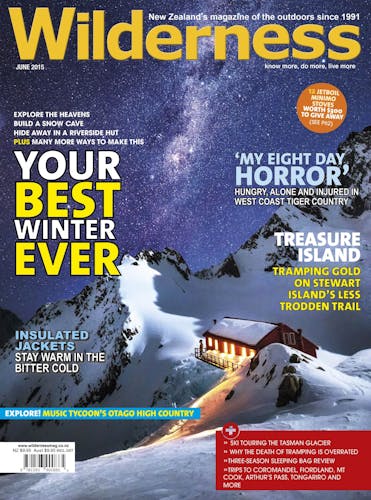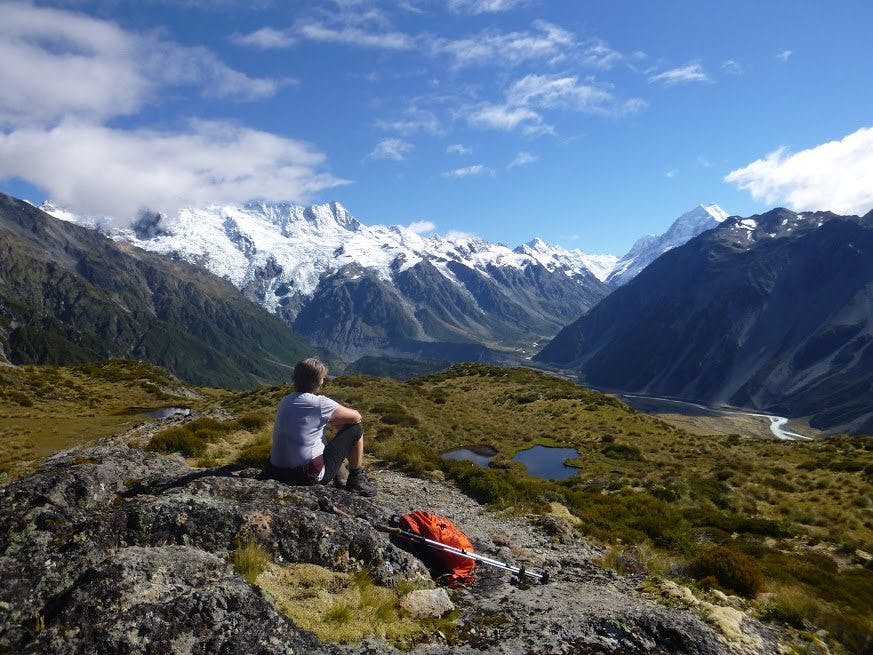It’s no good blaming the ills of the backcountry on one cash-strapped department, says Mick Abbott
This Easter I was in Top Hope Hut, in the Lake Sumner area, enjoying the nearby hot pools. It was surprising that the hut had no fire, a point that other visitors had made abundantly clear in the hut book with page after page referring to ‘Bloody DOC’, ‘what idiots’, ‘they should fix it’ etc.
But should DOC spend $5000 on a transporting and installing a log burner? Or is that money better spent grappling with the relentless swarms of wasps you experience on the walk out from the hut? Ultimately, if this is our great outdoors then the question of how to sort out the fire isn’t just for ‘bloody DOC’, but ourselves as well.
Like many Wilderness readers, my life has been spent in love with this country’s amazing backcountry. It’s a place rich with one-of-a-kind plants, birds, mountains and adventures. Each trip brings some sense of wonder – whether it’s trips across Fiordland, climbs up Tititea, rock climbing on Cloudy Peak, mountain biking the Mokihinui, being lost on the Fox névé or walking the Tongariro moonscape. Wonderfully, the list goes on.
But while many of us might call this ‘wilderness’, in the parlance of the people who manage these places they are known somewhat less emotively as New Zealand’s public conservation lands.
And it’s to this world of conservation management that over the past year I’ve been introduced, through being appointed to the Conservation Board for the Canterbury/Aoraki area. It’s been a rapid learning curve, and one that’s allowing me first hand to understand just what the ‘public’ in public conservation lands really means.
A Conservation Board’s key role is to represent the public’s point of view by providing guidance and direction to DOC in terms of what happens in New Zealand’s conservation lands, especially in relation to their 10 year plans.
The issues are wide-ranging, complex and contested – covering everything from ski fields to paper roads, visitor centres to helicopter access, pest management strategies to marine and waterway protection, species recovery programmes to climbing bolts and access for horse riders and mountain bikers. Then there are the processes by which land transferred to the department through tenure review is migrated from stewardship land into conservation park status.
It’s an open process and in the next few months, the Canterbury/Aoraki Conservation Board will begin work on the management plan for one of the country’s most iconic places – Aoraki/Mt Cook National Park. Keep an eye out for our open call to identify the key issues that need addressing – we are keen to hear everyone’s point of view. Later on there will be a similar opportunity to make submissions on the draft plan.
Which brings me to the other essential task for conservation boards; to be engaged with local communities so they genuinely represent their views regarding public conservation lands.
On DOC’s website you’ll see profiles of the 130 people who currently serve on the boards. We are all keen to hear from everyone – groups and individuals – about the conservation issues that matter in your neck of the woods. Many of us are only too happy to come and discuss issues with your group, and outline the current work we are doing.
But now for the hook.
We’re also likely to tell you there’s only so much money to go around – there’s a finite number of things DOC can do with the funding the government gives it. As we all know, our flora and fauna are under threat. Yet almost all our endangered species are only found in this country, which makes it difficult to piggy-back the conservation knowledge and efforts of other countries. Hence, not everything can get funded.
Case in point, Top Hope Hut and its wood burner. DOC doesn’t have the resources to provide such luxuries, which is why it’s vital for outdoor groups to get involved with looking after our backcountry. Federated Mountain Clubs, Trail Fund NZ, and the Deerstalkers Association have pooled their skills along with some funding for materials from DOC to set up hutsandtracks.org.nz. Around the country, huts are being fixed up and tracks cleared and marked by groups of volunteers. In April, the Combined 4WD Club was up at Scotties Hut in the St James, giving it a complete makeover.
In terms of conservation work there’s also a lot happening. Hurunui High School has been doing long-term trapping in the Nina Valley, east of Lewis Pass. Their efforts have been so successful they have been able to release kiwi back into the wild. Further north, volunteers have been checking population numbers of the rare New Zealand dabchick, in the Rotorua region.
If our public conservation lands are to be truly public then as well as letting our views be known on various management strategies we also need to own aspects of their care. Sign up to a project at hutsandtracks.org.nz, or contact local conservation trusts and visit DOC’s volunteer pages to get involved. (Who knows, maybe Top Hope Hut will finally get a wood burner?)
In doing this we ensure these special places remain ours – not only by what the various policies say, or our adventures, but also by our actions in looking after them.








